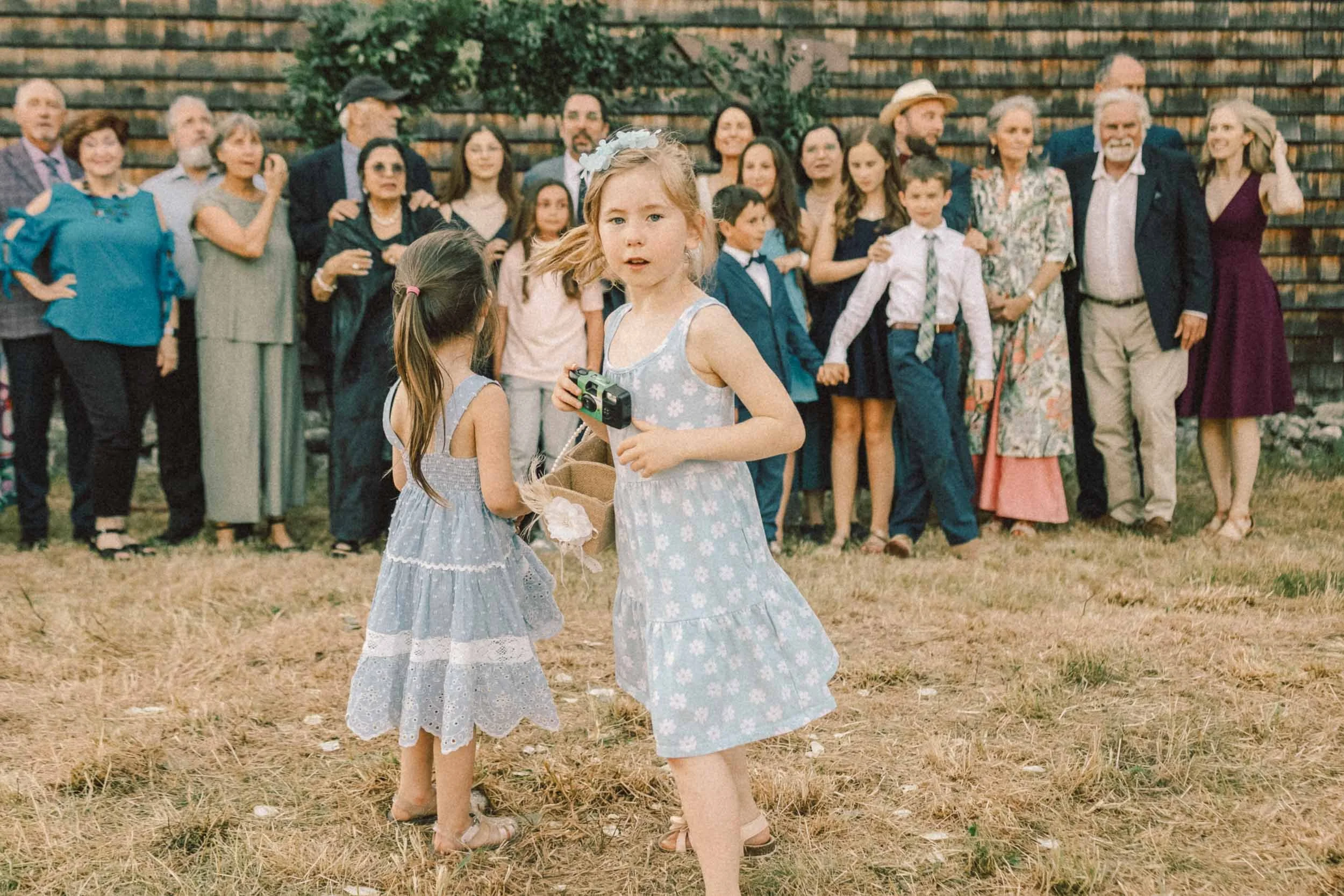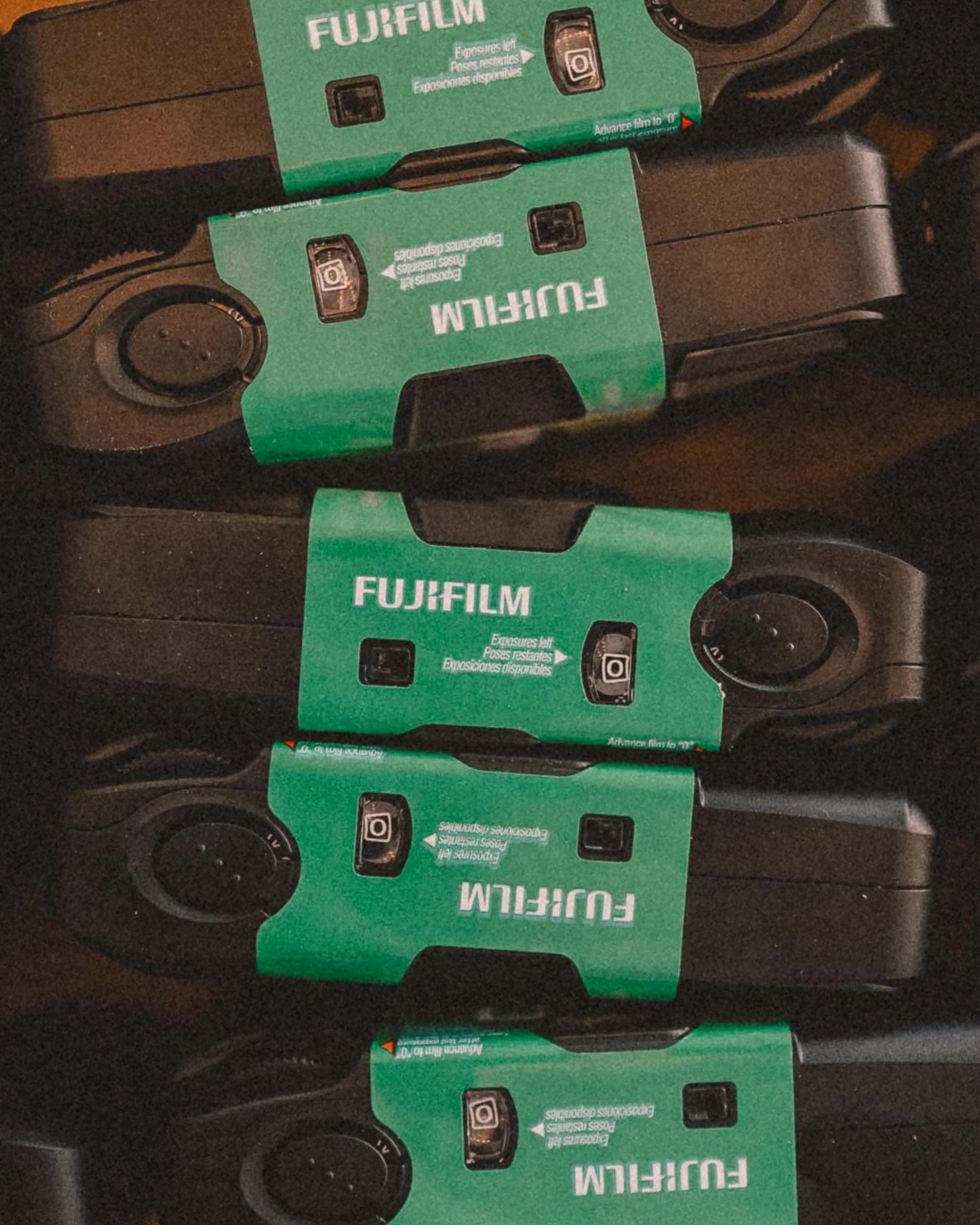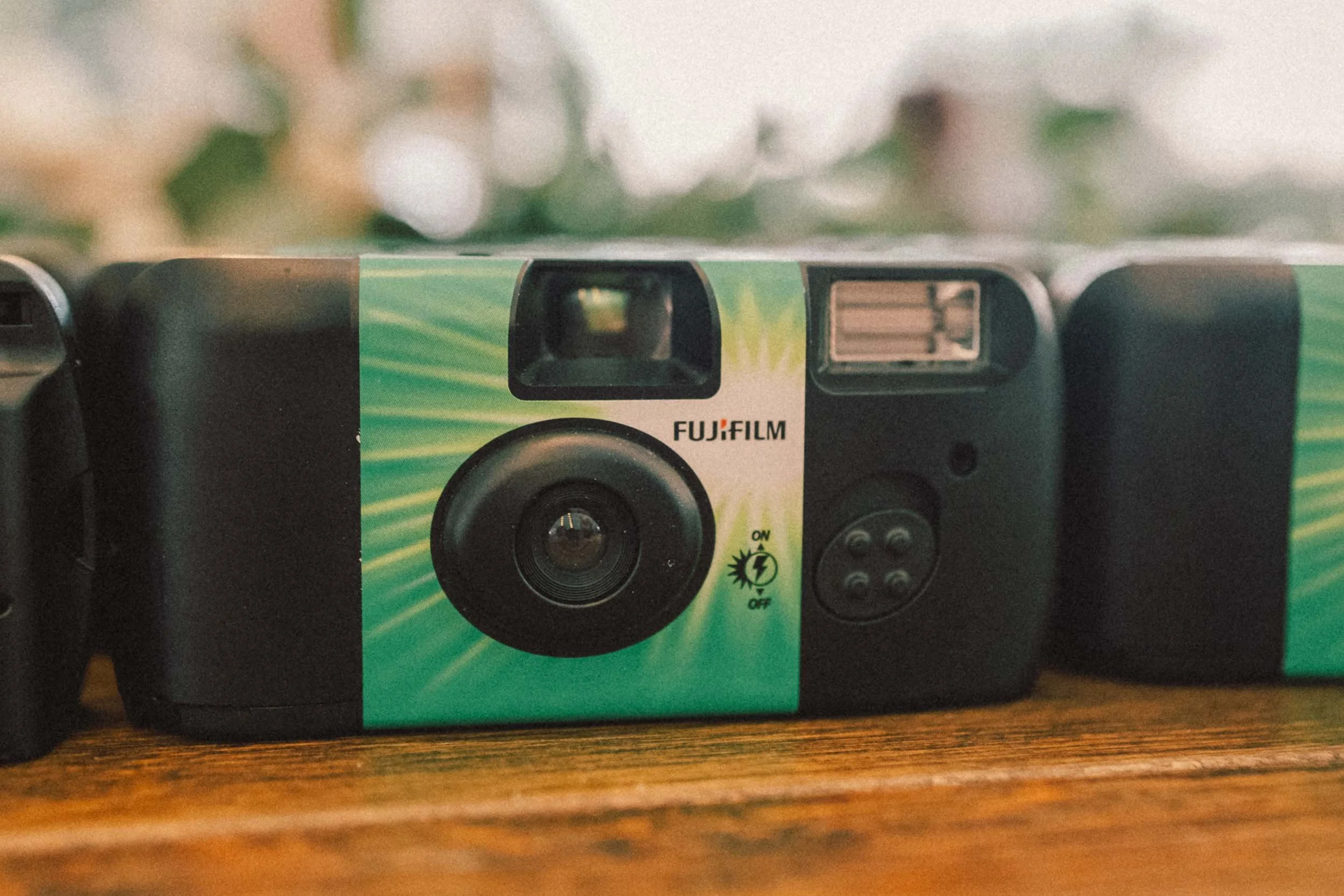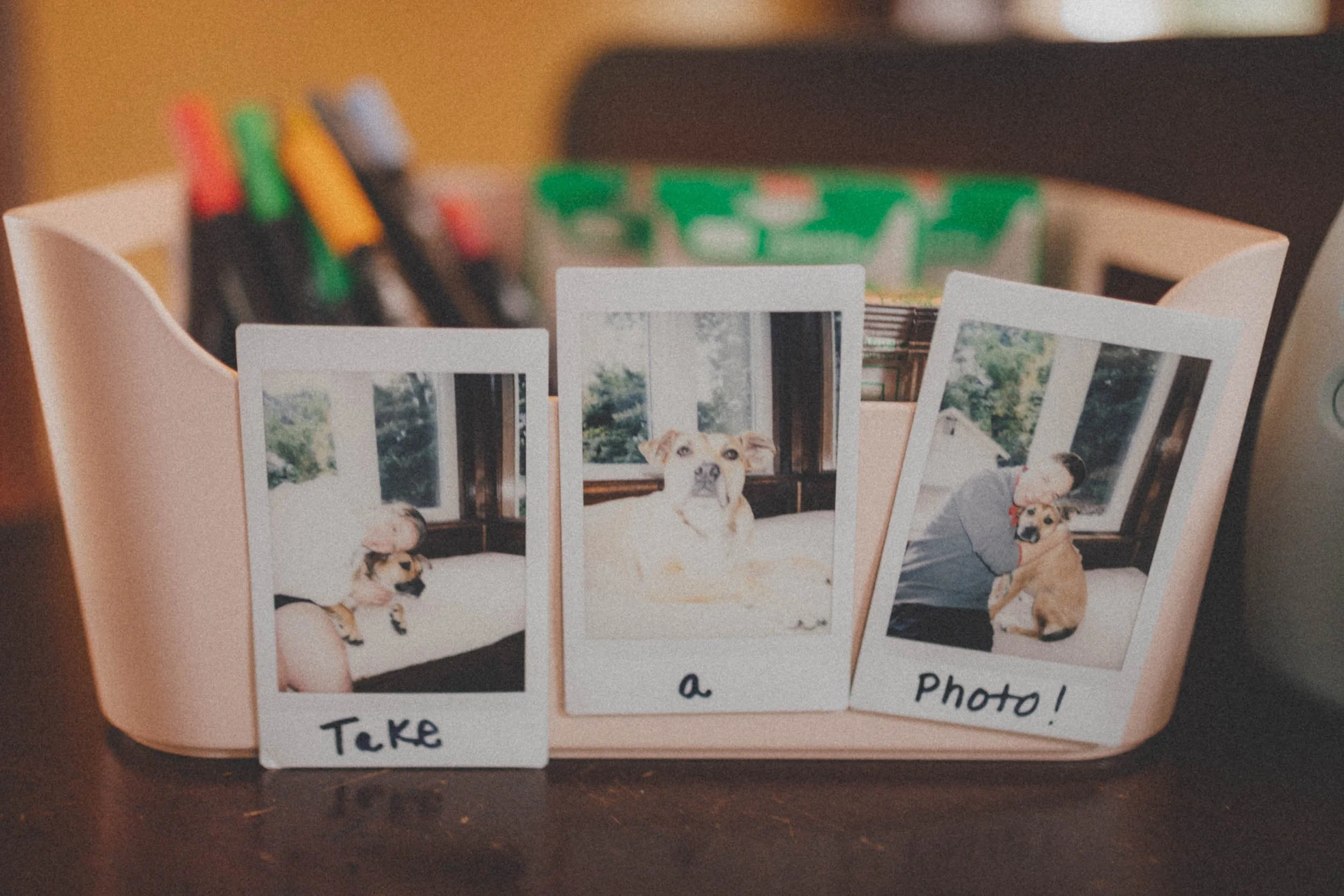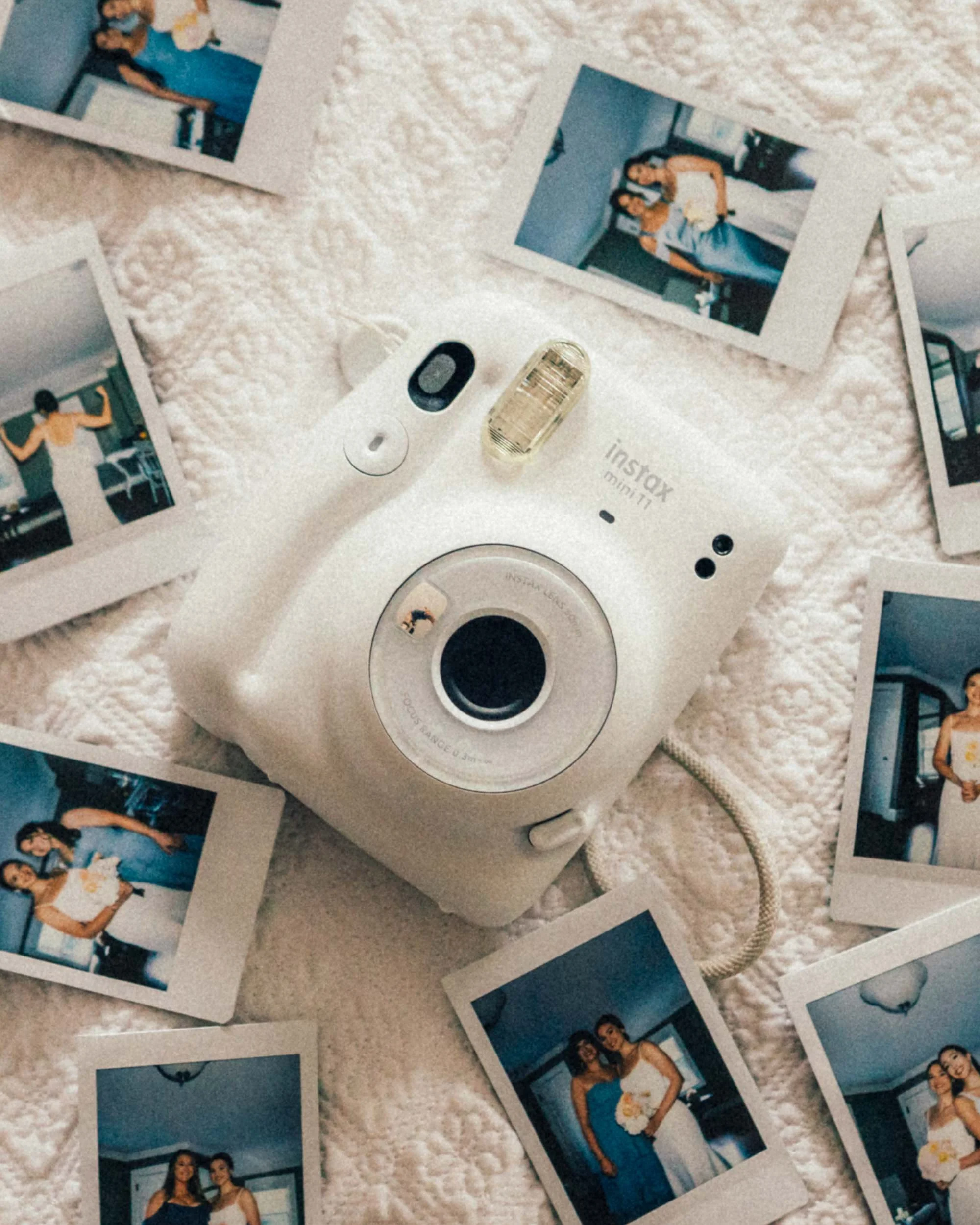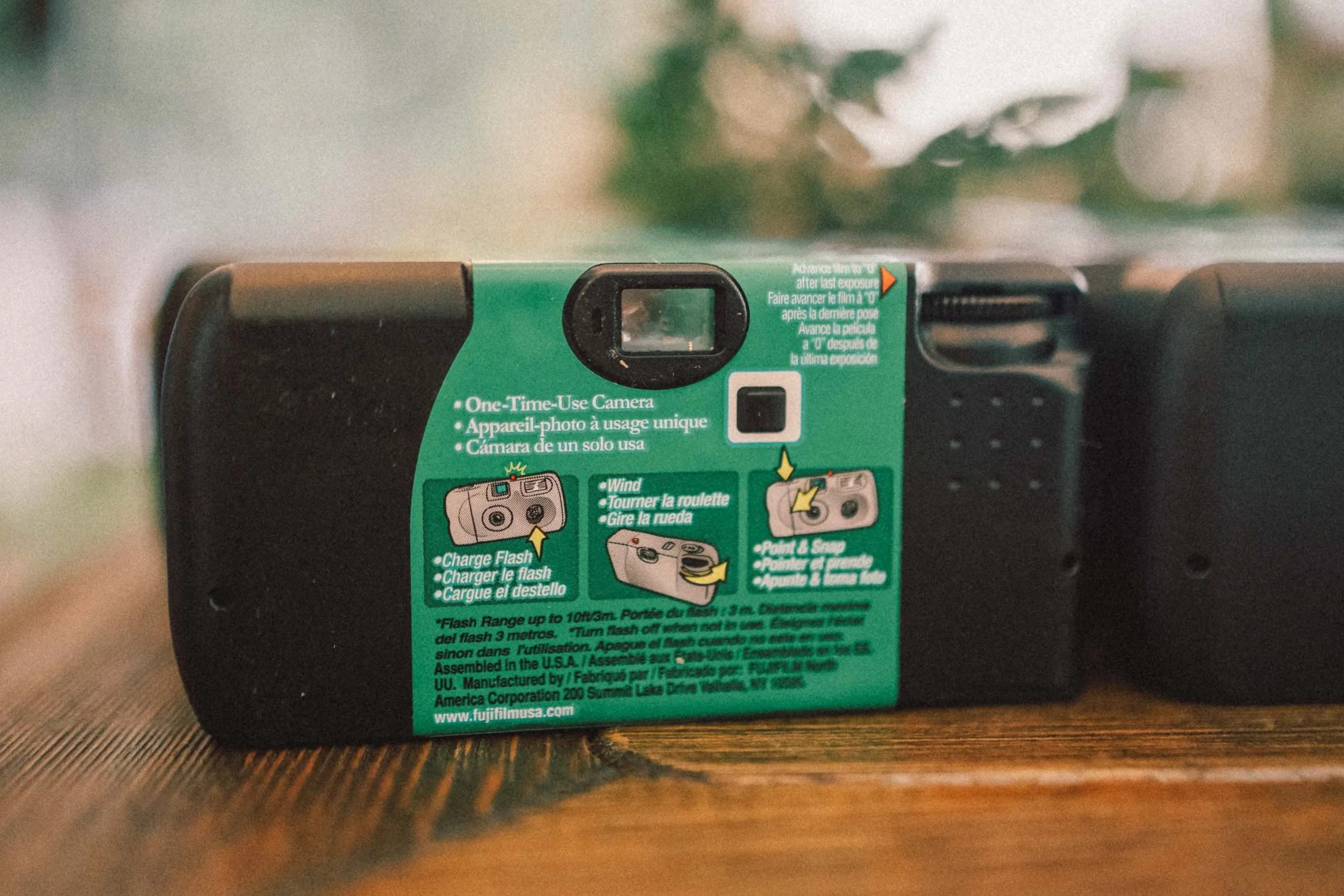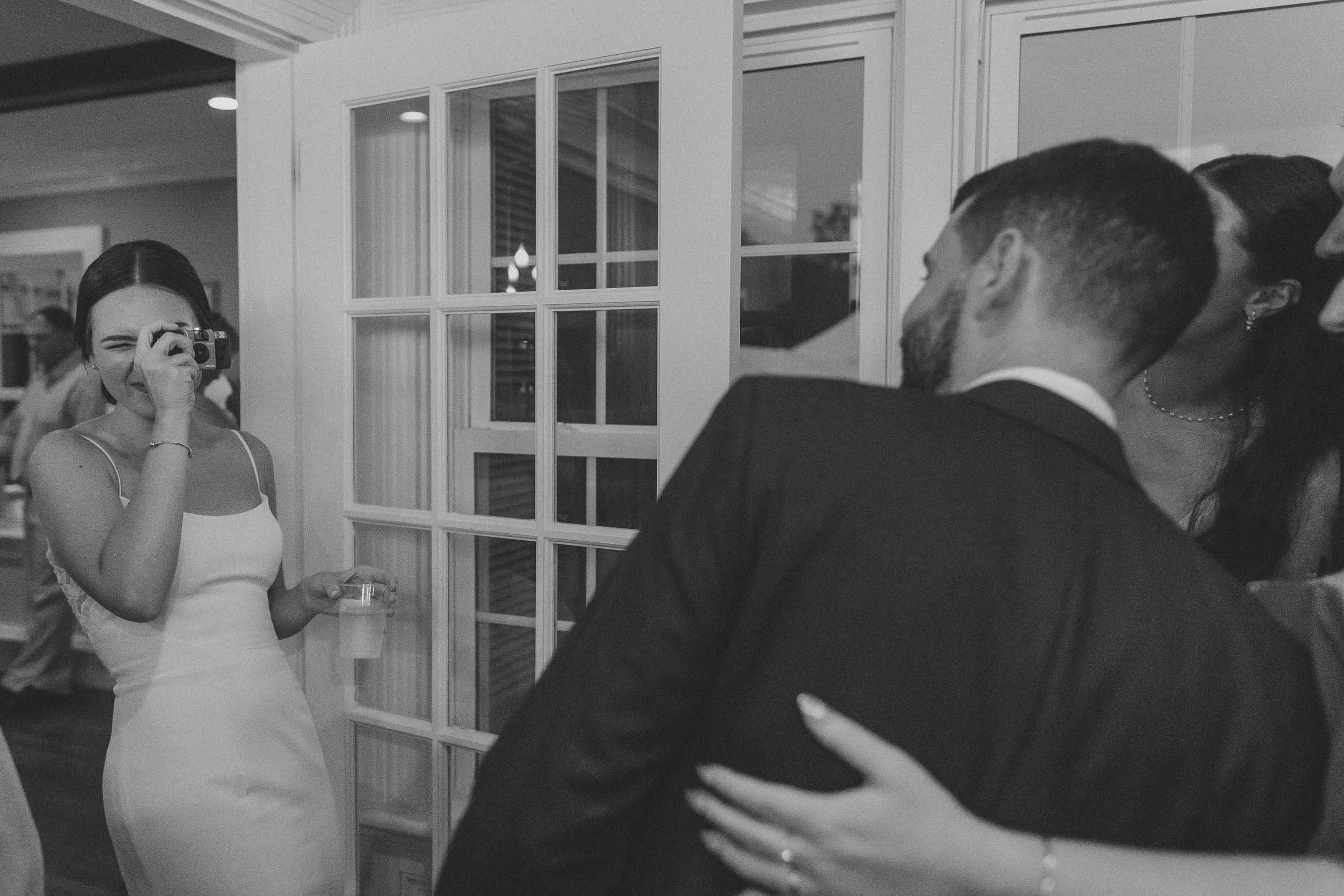Guide to Disposable Cameras for Weddings
- How many to use Use one disposable camera per 10–15 guests (e.g. ~8–10 for 100 guests) :contentReference[oaicite:0]{index=0}
- Lighting tip Always use flash indoors; limit subject distance to ~10 ft for usable exposures :contentReference[oaicite:1]{index=1}
- Placement strategy Set cameras on tables, bar, dessert or guest-book station—high-traffic zones first :contentReference[oaicite:2]{index=2}
- Development cost $15–$30 per roll (developer + digital scans) :contentReference[oaicite:3]{index=3}
- Pro lab over drugstore Use professional labs for consistent results & better scanning :contentReference[oaicite:4]{index=4}
- Guest instructions Provide simple prompts: “Flash on, stay close, don’t cover lens” with a collection basket :contentReference[oaicite:5]{index=5}
Disposable cameras bring a nostalgic, candid charm to weddings that no smartphone can replicate. Guests love the chance to play photographer, and you’ll end up with unexpected moments that feel fun, real, and unposed.
This guide covers everything you need to know: the best camera models, where to buy them, how to place them at your wedding, alternatives, developing advice, and pro tips for making sure every shot gets used.
Why Use Disposable Cameras at Weddings?
Nostalgia factor: They create grainy, imperfect photos that feel timeless.
Guest engagement: Cameras double as entertainment, keeping guests involved.
Candid storytelling: You’ll capture honest, unfiltered moments your photographer might miss.
Keepsakes: Every roll of film becomes part of your wedding story.
Pro Tip: Assign a few cameras to the wedding party so rolls actually get finished—and remind guests to keep the flash on and shoot within ~10 feet.
Love the idea of authentic, unscripted coverage? Explore my Boston wedding photography portfolio for more real moments.
Best Disposable Cameras for Weddings
Not all disposable cameras are created equal. Here are today’s top options and when to use each.
| Camera Model | Film ISO | Exposures | Highlight Features | Best Use Case |
|---|---|---|---|---|
| Kodak FunSaver | 800 | ~27 | Versatile, warm tonality, sharpest budget pick | All-day events; indoor (flash) / outdoor |
| Fujifilm QuickSnap | 400 | ~27 | Consistent flash, natural tones | Bright venues, daytime ceremonies |
| Cheecam Luxe (Reusable) | — | 24–36 | Sustainable, refillable, bulk options | Eco-conscious couples; stylish keepsake |
| Waterproof Models (Kodak/Fuji) | 800 | ~27 | Rugged, splash-proof, pool/beach friendly | Outdoor or destination weddings |
Pro tip: Indoors, reach for Kodak FunSaver (ISO 800) for better low-light flexibility. For bright outdoor summer weddings, Fujifilm QuickSnap delivers a cleaner, crisper look.
Want your professional images to capture the same playful energy? See my Boston wedding video portfolio for films that feel alive.
How Many Cameras Do You Need?
A good rule of thumb: one disposable camera per 10–15 guests.
100 guests = 8–10 cameras
200 guests = 15–20 cameras
This ensures full use without overspending or leaving film unused.
Pro Tip: Start with fewer cameras on tables and keep a small reserve. Re-deploy midday to fresh tables so you don’t pay to develop half-used rolls.
Planning your coverage? Check out my wedding photography coverage options to see how I customize packages for guest counts.
Where to Place the Cameras
Strategic placement makes all the difference:
On reception tables (one per table)
By the guest book or entrance
At the bar or dessert table
Near the dance floor (where the real action happens)
Pro Tip: Prioritize high-energy zones—dance floor, bar, dessert table—and skip low-traffic areas. Add a small sign and a collection box by the exit.
Curious how I capture those unguarded, late-night dance floor shots? Learn about my hybrid photo + video coverage.
How to Give Guests Instructions
Don’t assume people will know how to use them—make it fun and easy:
Add a small instruction card (“Flash on, stay close, don’t cover the lens”).
Create a playful “I Spy” game with prompts: “Snap a picture of… the couple kissing, someone laughing, the best dance move.”
Provide a collection box or basket so cameras don’t get lost.
Pro Tip: Use a simple “I Spy” card with 5–6 prompts (max) and one clear rule: Flash on, stay close, don’t cover the lens.
I take the same approach with your wedding party—minimal direction, maximum presence. See my approach to working with a second photographer.
Lighting Tips for Better Photos
Disposable cameras need lots of light. Keep these in mind:
Outdoors: Bright daylight gives the cleanest results.
Indoors: Always use the flash, even in well-lit rooms.
Distance: Flash only works within ~10 feet. Remind guests to get close.
Pro Tip: Skip trying to capture distant moments (like speeches across the room)—the images will be dark.
Lighting can make or break photos. See how I handle it in my Boston elopement coverage.
Alternatives to Disposable Cameras
Not sure if disposables are the best fit? Here are other options:
Instant cameras (Polaroid / Fujifilm Instax): Instant prints for a guestbook or photo wall.
Hire a film photographer: Professional quality with the nostalgic look.
Reusable 35mm cameras: Like the Cheecam Luxe—eco-friendly and cost-effective long term.
Pro Tip: If you set up an Instax/Polaroid station, assign an attendant and stock extra film, fresh batteries, a trash bin for empty packs, and tape for a guestbook wall.
Want something more permanent than Polaroids? Browse my wedding album options for timeless keepsakes.
Developing and Scanning Disposable Cameras
This is where many couples make mistakes. Skip the drugstore—choose a pro lab for consistent results:
Pro labs to try: Richard Photo Lab, The Darkroom, Indie Film Lab.
Average cost: $15–30 per roll (development + digital scans).
Turnaround: 1–2 weeks depending on lab and shipping.
Pro Tip: Number each camera before the wedding and log who it went to. Ask the lab for high-resolution scans and to return negatives for archiving.
I also deliver your professional wedding photos in just two weeks. See details in my frequently asked questions.
Disposable Camera for Weddings — FAQs
How many disposable cameras are enough?
A good rule of thumb is one disposable camera per 10–15 guests. For instance, a 100-guest wedding might use 8–10 cameras to avoid under- or over-using rolls. :contentReference[oaicite:6]{index=6}
Where should we place the cameras?
Place cameras on reception tables, bar, dessert table, guestbook station, or near the dance floor—areas where guests naturally congregate. :contentReference[oaicite:7]{index=7}
Do disposable cameras work well in low light?
Not usually. Use flash indoors or in darker settings. Even then, limit subject distance to around 10 ft to avoid dark or blurry shots. :contentReference[oaicite:8]{index=8}
How much does it cost to develop disposable cameras?
Development and scanning typically cost between $15 and $30 per roll, depending on lab, shipping, and quality. :contentReference[oaicite:9]{index=9}
Should I use a pro lab or a drugstore?
Professional labs deliver more consistent results, careful scanning, and color correction. Drugstore development is often less reliable. :contentReference[oaicite:10]{index=10}
What instructions should guests receive?
Keep instructions simple: “Flash on, stay close, don’t cover lens.” Use prompts like “take a photo of… someone laughing.” Provide a return box so cameras aren’t lost. :contentReference[oaicite:11]{index=11}
Are disposable cameras worth it?
They add playful, candid moments and nostalgic texture—but results are unpredictable. Use a few to supplement—not replace—your pro photography. :contentReference[oaicite:12]{index=12}
Ready for a photographer who blends candid charm with modern coverage? Get in touch today.
Final Thoughts
Disposable cameras are an affordable, nostalgic way to add another layer of storytelling to your wedding day. With the right cameras, placement, and guest instructions, you’ll get hundreds of fun, candid memories—perfectly imperfect and full of energy.
Looking for professional coverage too? As a Boston wedding photographer and hybrid videographer, I capture the day with a mix of timeless documentary imagery and modern editorial style. Get in touch here to learn more.


